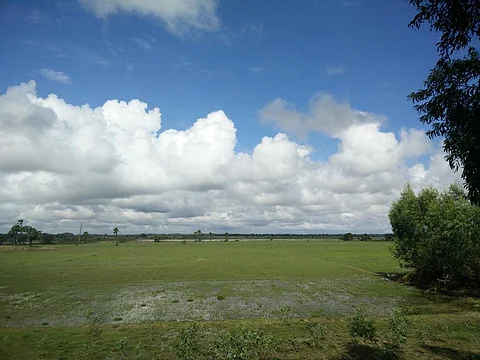

CHENNAI: Tamil Nadu's largest 4,000 MW Cheyyur thermal power plant proposed near Chennai finds a place among India's top 12 non-performing assets, according to a new report released by US-based Institute for Energy Economics and Financial Analysis (IEEFA).
IEEFA report, released on Wednesday, reviewed 12 non-performing assets (NPAs) in India’s thermal coal-fired generation sector, some previously identified by the government, and others unable to operate at a competitive price.
“Each of the 12 non-performing assets we reviewed had questionable economics behind their investment proposals, particularly as lower cost renewable alternatives can be built in a third of the time and at 30% or lower cost to Indian electricity consumers,” says Tim Buckley, lead author of the report and director of energy finance studies with IEEFA.
"For instance, Cheyyur plant is one of 16 ultra-mega power plants (UMPP) proposed back in 2008. At that time, large scale coal-fired power was considered one of India’s better commercial options, predicated on low import coal prices and unrealistically low capital construction costs. Only two ultra-mega power plants have since been built (Reliance Power’s Sasan and Tata Power’s Mundra), and both are stranded assets," the report said.
The IEEFA referred to Express report in April this year on Central government stalling the establishment of a captive port for the proposed Cheyyur project. Earlier in February, the Environment Ministry had denied clearance for the Cheyyur UMPP after the fuel source was changed from 10-12Mtpa of imported coal to 18- 20Mtpa of lower energy content domestic coal (to be railed, then coastal barged a combined 1,500km from North East India).
The greater scale of coal use meant the land use requirement had nearly doubled to 2,000 acres. The developers of the 25,970 crore-project Coastal Tamil Nadu Power Limited (CTNPL), a special purpose vehicle of the government-owned Power Finance Corp (PFC), has been directed to reapply for clearances, including conducting an environmental impact assessment and holding public hearings once again.
Bad economics
In 2015, IEEFA modelled the likely cost of electricity from the import coal-based Cheyyur plant at a tariff of Rs4.90/kWh in 2021, rising to a levelised cost of electricity of Rs 5.95/kWh over the life of the project presuming plant load factor (PLF) of 80 per cent. IEEFA notes that in the four years since that modelling was undertaken, the average coal-fired power plant in India has operated at less than 60 per cent PLF.
Assuming cost of imported 5,000kcal thermal coal is $65/tonne, Cheyyur’s required tariff would be Rs 5-6/kWh, with ongoing fuel cost escalations over the life of the project. Tamil Nadu has consistently awarded wind and solar tenders at below Rs3/kWh in the last three years, half the modelled price required for the Cheyyur proposal, and with zero price indexation over the 25-year contract life.
A new report titled 'Winds of Change: No New Coal States of India', by New Delhi-based Climate Trends states that three States - Tamil Nadu, Rajasthan and Karnataka - would follow in the footsteps of Gujarat and Chhattisgarh to declare a 'new new coal' policy. This implies that these states will not need any new coal power plants in the future, and all of their future energy demands could be cost-effectively met by renewable and flexible based energy alone.
Aarti Khosla, Director, Climate Trends, said: "Karnataka, Rajasthan, Tamil Nadu are states with the highest renewable energy (RE) potential in the country. Their installed RE capacities are either higher than coal power or are on a path to overtake it."
Shweta Narayan, India Coordinator at the Healthy Energy Initiative, a global collaboration of health researchers and organisation advocating the need to move away from fossil-based-power generation, says the environmental concerns, land acquisition problems, rise of renewables and overall feasibility goes against thermal power plants.
Need for no-coal policy
1. TN non-fossils exceeds fossils by 2.3 GW.
2. Coal stands at 13.5 GW whereas renewables stands at 15.6 GW.
3. TN has the highest installed capacity of wind energy, as well as the largest wind power farm at 1500 MW.
4. Despite the fast growth in renewables, the state government continues to propose and build more thermal power plants.
5. According to the state’s energy policy note for 2018-19, there are five on-going projects with a combined capacity of 5,700 MW.
6. Study shows the combined debt for Rajasthan, Karnataka and Tamil Nadu stands at $ 6bn, or Rs 43,562 cr.
7. These three States account for more than half of the country’s DISCOM (Electricity Distribution Companies) debt.
8. Yet, Tamil Nadu has the highest new coal power pipeline in India.
9. TN and Rajasthan governments cannot afford to hand out free electricity when their DISCOMs are bleeding.
10. The only way for them to repay their dues is to buy cheap electricity, which must be renewables-based.
TN a pioneer:
1. Tamil Nadu already operates the most diversified electricity generation fleet in India, with renewables representing 35% of installed capacity as of March 2017, nuclear 8% and hydroelectricity 7%. Coal-fired power capacity represents 45% or 13.4 GW.
2. In 2017-18, it has harnessed 13,000 million units of wind energy, 2,905 million units of solar energy, leading to a combined reduction of 5,406 million tonnes of carbon emissions. As of March 2018, the state has a total renewable capacity of 11,113 MW.
Fly ash concern:
1. The most immediate threat to those living around coal-fired thermal power plants is fly ash, which is generated when the coal is burnt.
2. This contains toxic heavy metals like arsenic, nickel and manganese.
3. Central government norms say that all thermal power plants need to utilise all the fly ash it generates.
4. However, nearly a third of the fly ash generated in Tamil Nadu gets mixed with water and the sludge is indiscriminately dumped into surrounding water bodies.
5. According to a December 2018 report from the Central Electricity Authority, the state generated 10.42 million tonnes of fly ash in 2017-18, while utilising only 6.99 million tonnes, or 67%.